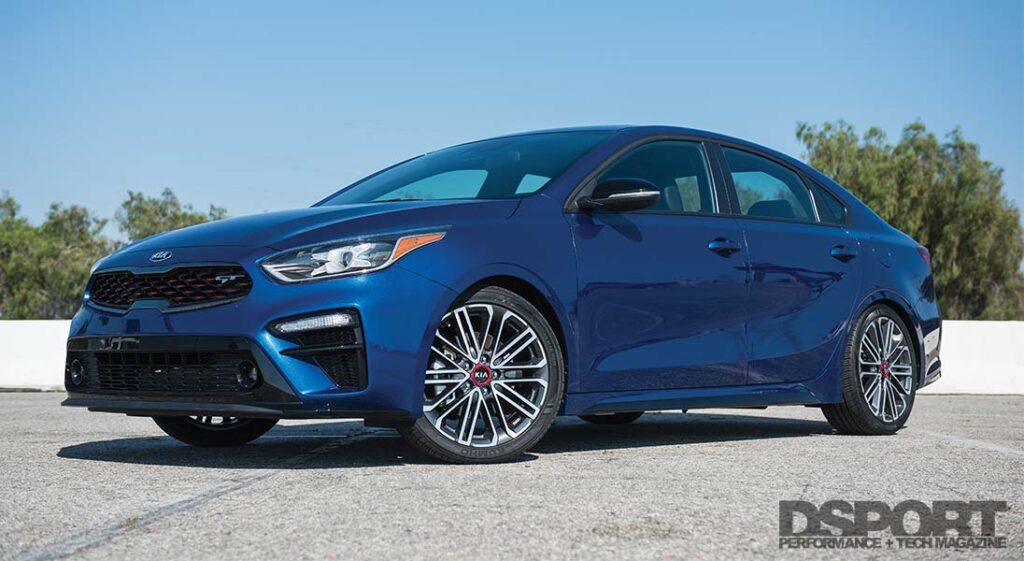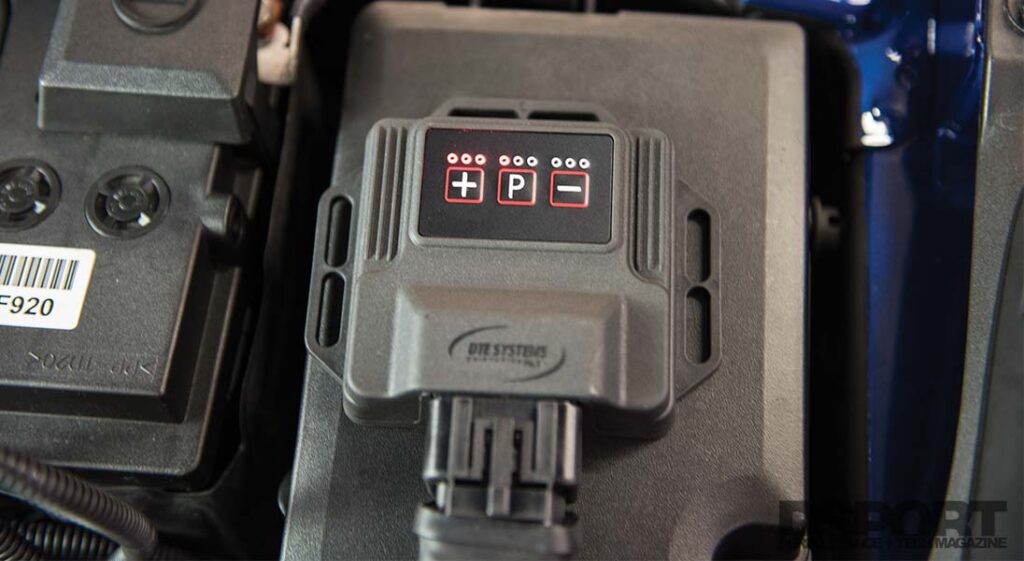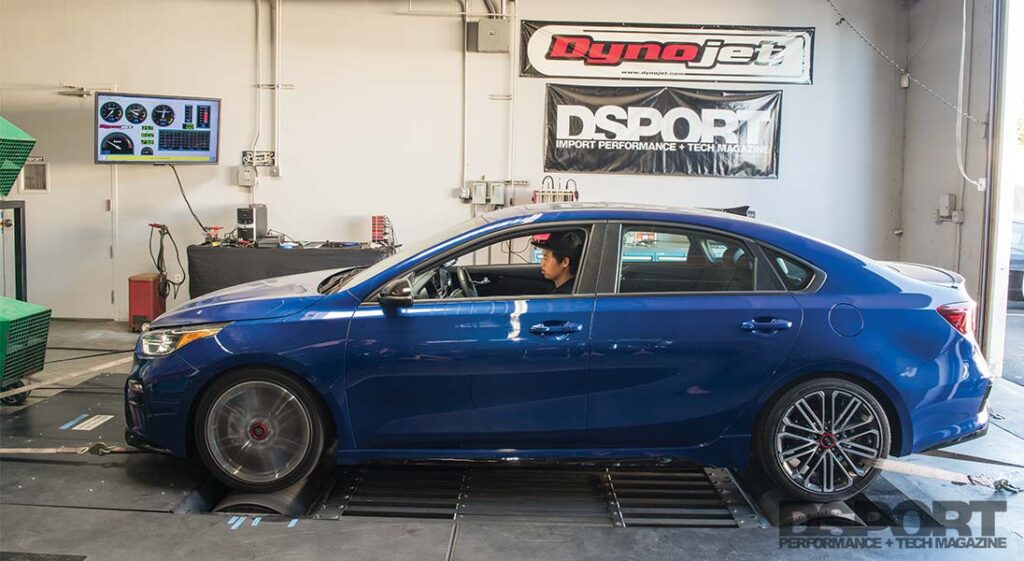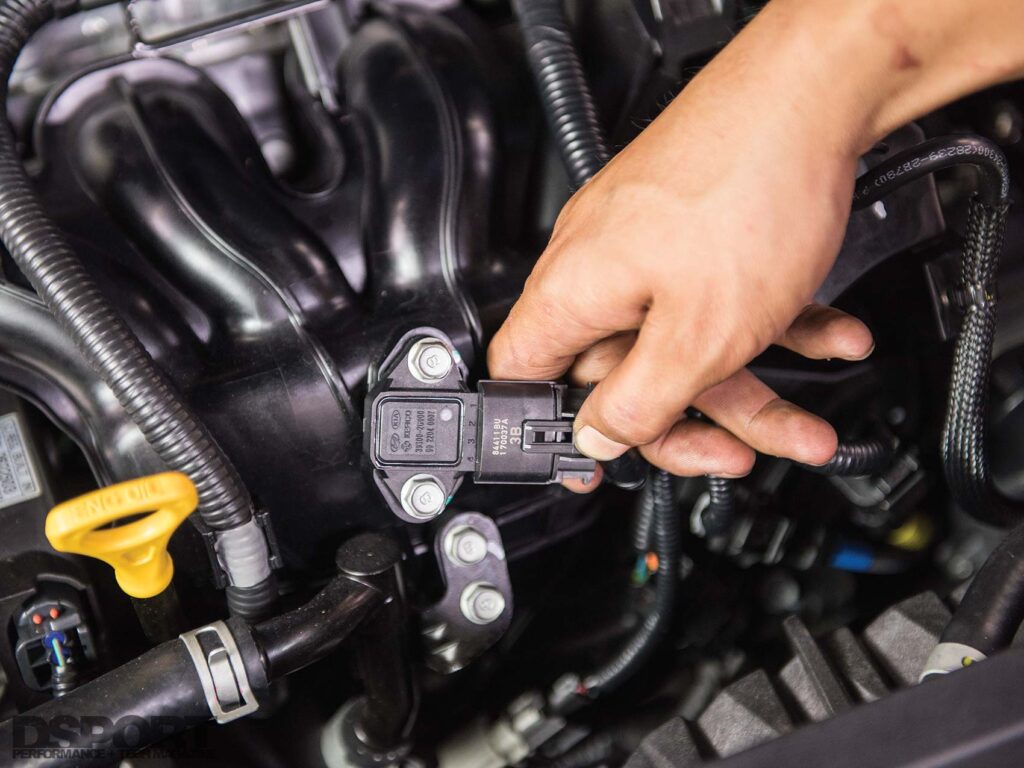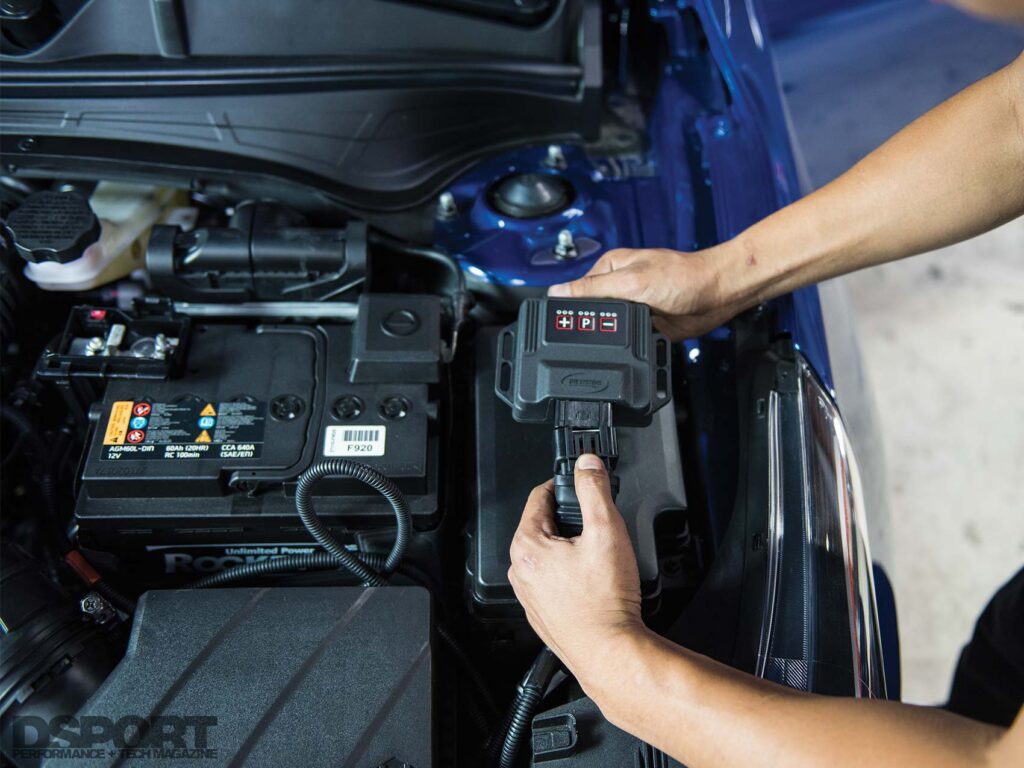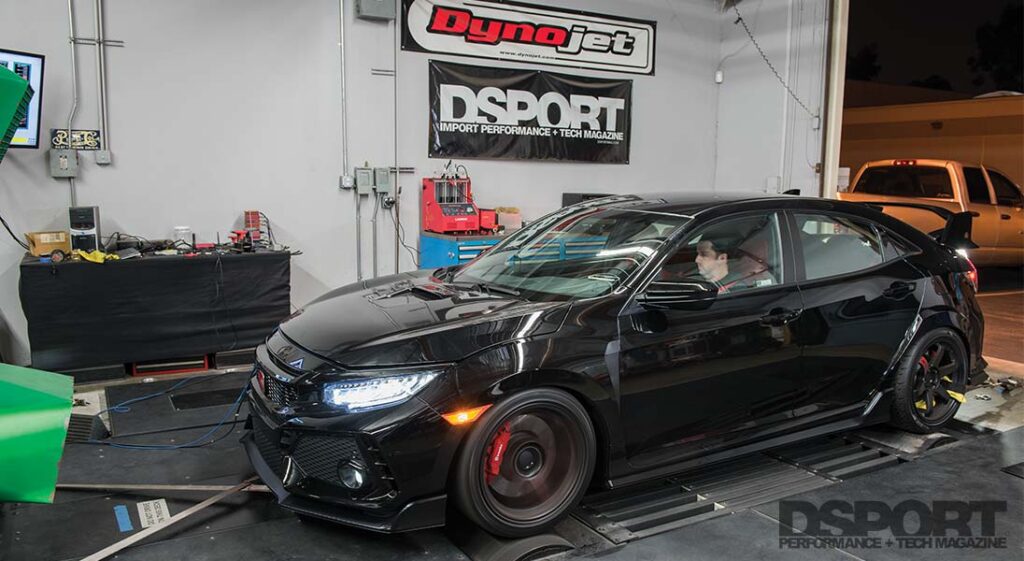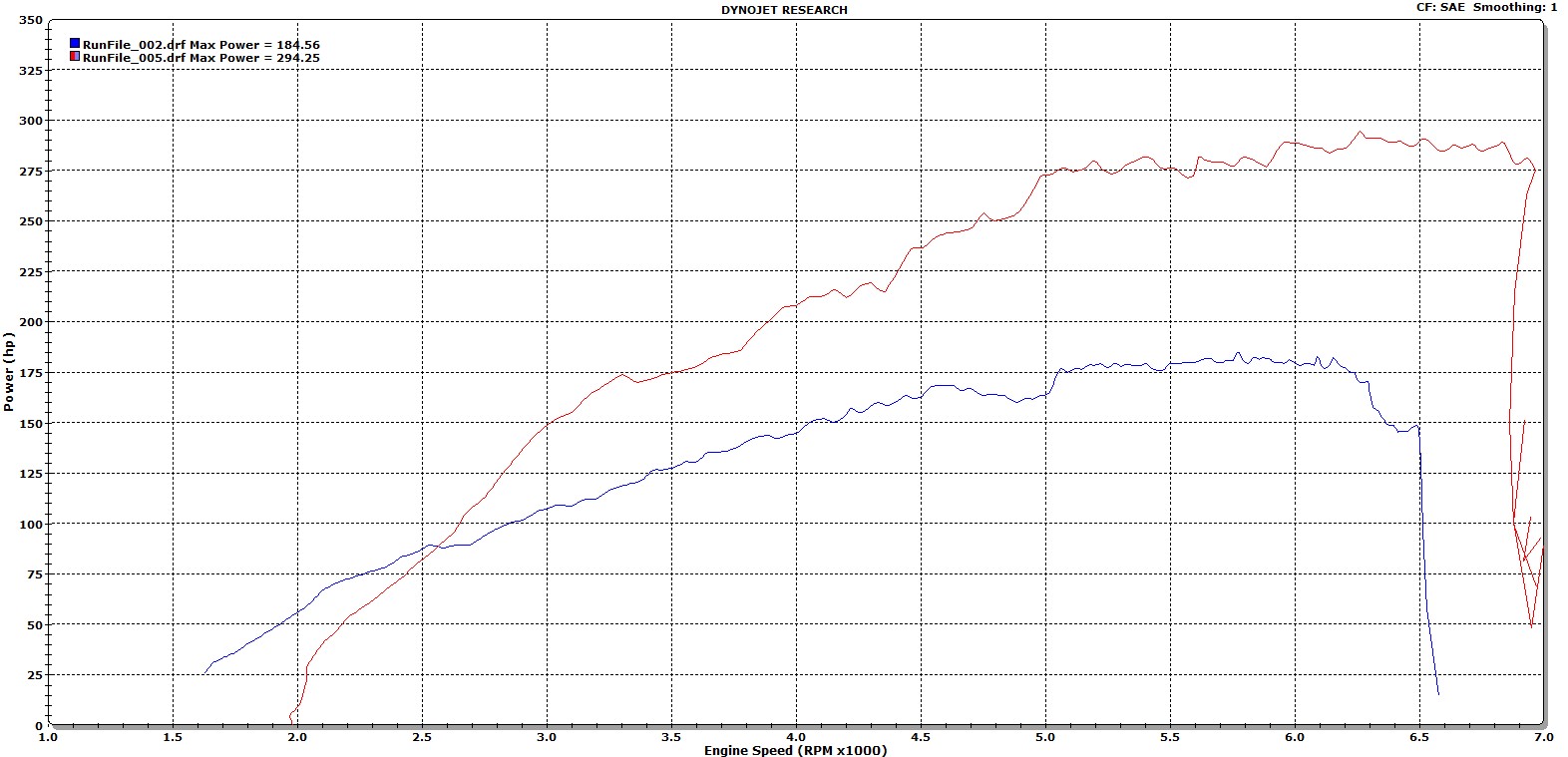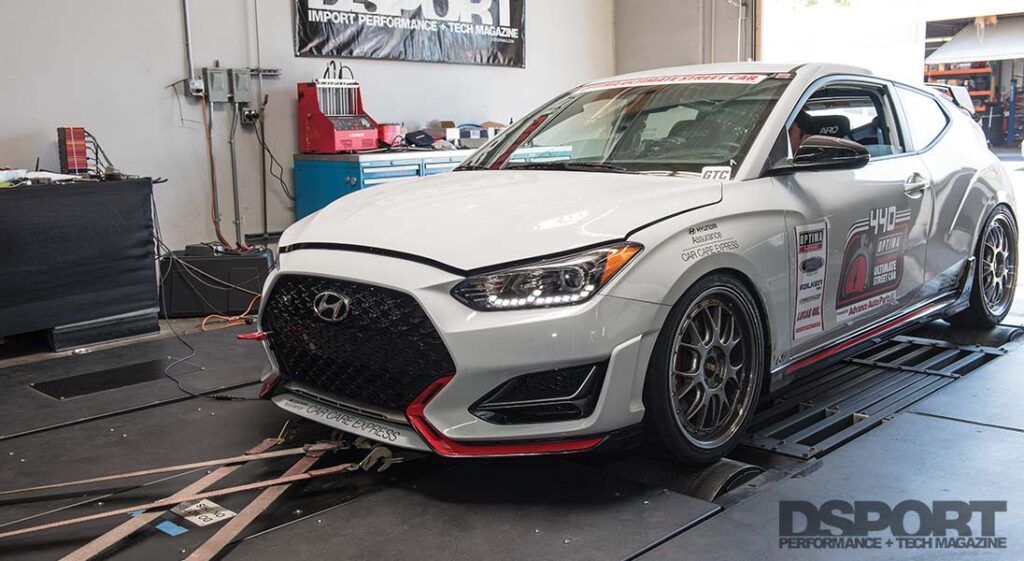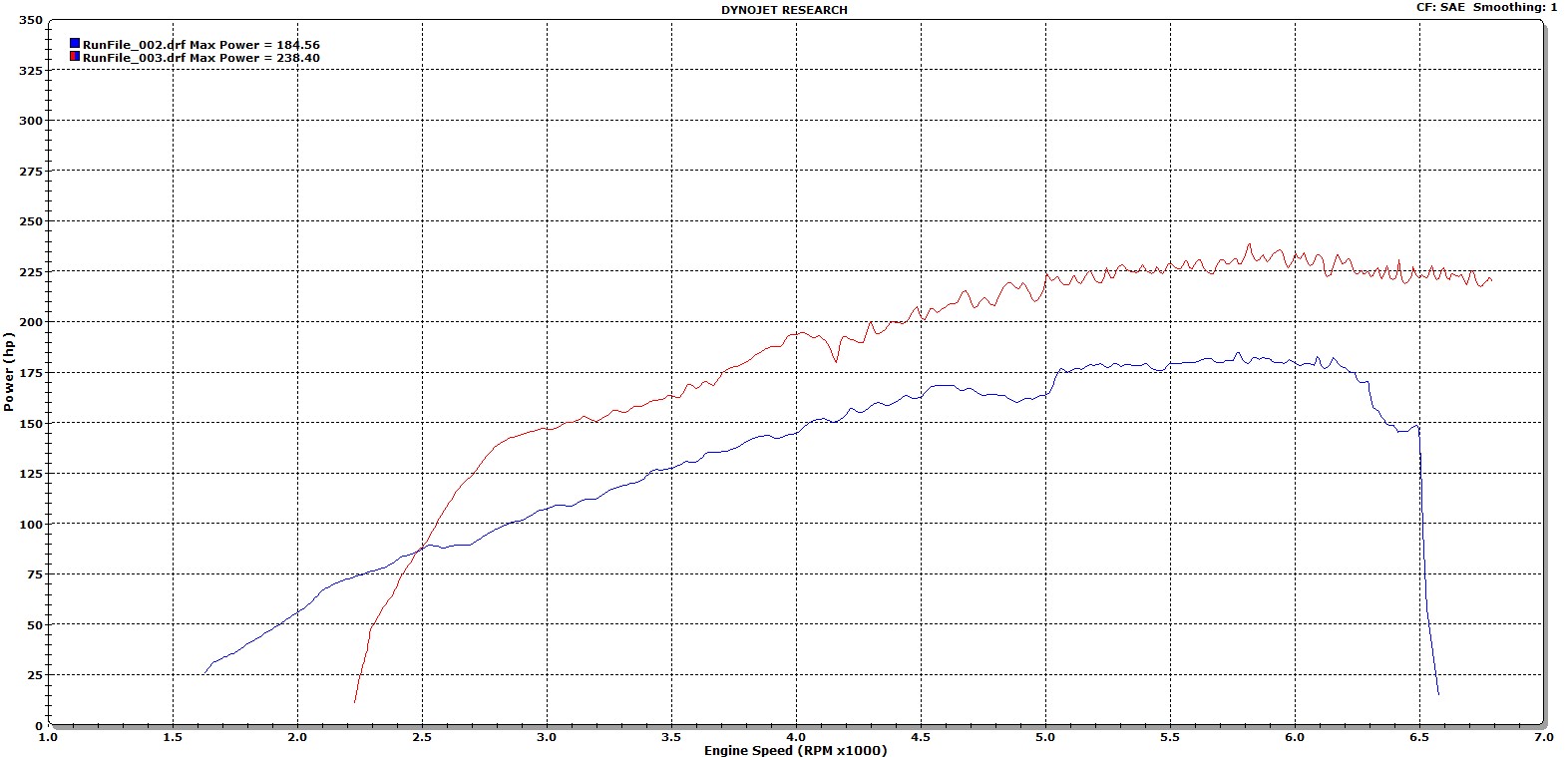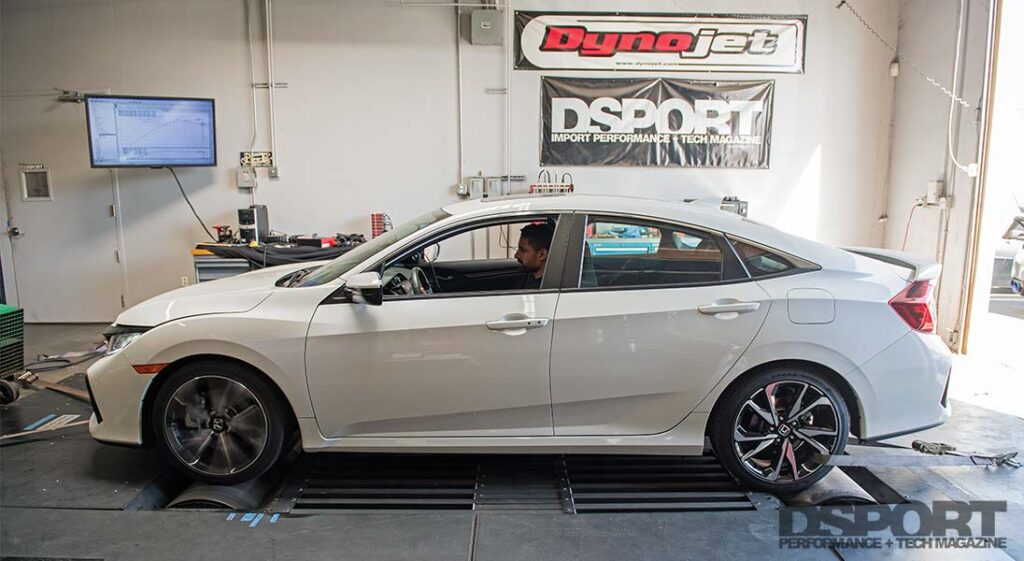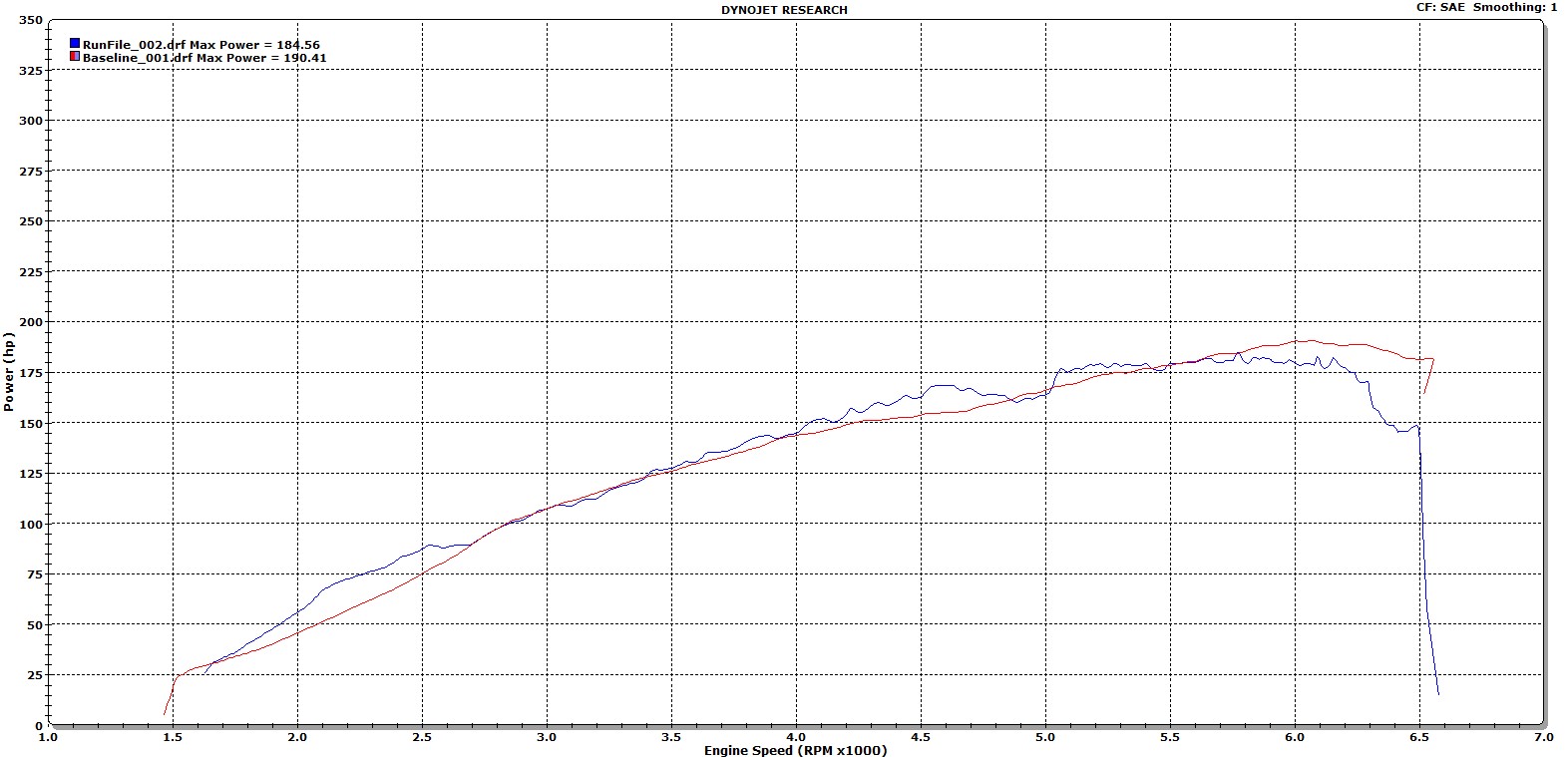For decades, the “import performance” market has been synonymous with Japanese vehicles. Toyota, Nissan, Mazda, Subaru, and Mitsubishi have all made significant contributions to prove to everyone that there are replacements for displacement. Thanks to a vast network of aftermarket tuners and part manufacturers, these vehicles have a solid footing with performance enthusiasts. The Kia Stinger and Hyundai Veloster N recently came into the market to prove that Korea is interested in being a part of the game. While car manufacturers have been plotting a transition to SUVs, CVT transmissions, hybrids, and electric cars; Kia gifted the industry with a well-rounded, turbocharged performance vehicle with a manual transmission named Forte GT. Although the Forte is capable of competing with numerous performance platforms on the market, we decided to up the ante.
Text by Bassem Girgis // Photos by Joe Singleton
DSPORT Issue #215
While the 2020 Kia Forte GT provides performance nearly identical to the Honda Civic Si, we wanted to put it up against the Honda Civic Type R instead.
The Project
While the Forte GT delivers great performance out-of-the-box, this market is motivated by aftermarket support. Unfortunately, the Kia GT line is new to the scene, and aftermarket support is lacking. We got approached by our friends at Harman Kardon asking us to build a 2020 Kia Forte GT. With power and torque numbers almost identical to the Honda Civic Si, we knew it wouldn’t be much of a challenge to go up against it. Instead, we wanted to challenge the more-capable Honda Civic Type R. Obviously we can make just about any car quicker than any other car if we had a blank check, but by placing ourselves in the enthusiasts’ shoes, we had to make some realistic benchmarks as far as the budget goes. After going back and forth between $7,000, $5,000, $4,000, and everything in between, we figured we will make it tougher and keep the budget as low as $3,500. With a starting price tag of $23,815 for the manual transmission option, the total budget will be $27,315 after the upgrades. This will place our Kia Forte almost $9,000 less than the Honda Civic Type R, all while being quicker on the drag strip. After we accomplish our goal of making the Forte quicker than the Type R, we will expand our budget to address looks, handling, braking, and some other options.
The Evaluation
In issue 213 of DSPORT Magazine, we gave our review of the 2020 Kia Forte GT. To sum it up, we thought it was pleasant on the streets with stiff-enough suspension, yet not punishing. While it could use a little more response from the automatic transmission, the 1.6-liter turbocharged engine is no slouch, and the manual transmission is sure to put a bigger smile on your face. Driving pleasure is enhanced with Harman Kardon’s 360-watt sound system, which comes standard with the manual transmission option (more reason to get the manual). With a Civic Si in our garage, we felt the 2020 Kia Forte GT is as close as can be to the Honda Civic Si. The difference will be based on personal preference. If you would like to read the complete review for the bone-stock Kia Forte GT, pick up issue 213 of DSPORT Magazine.

Before getting into our light tuning solution for this project, we wanted to compare the Kia Forte GT with the competitors in the same price category. We worked overtime to bring completely stock vehicles to compare to the Forte. We were able to strap to our dyno a Honda Civic Si, Hyundai Veloster N, Honda Civic Type R, and finally the Forte GT. On our dyno, the Civic Si came closest to the Forte GT, with the Si putting down 190whp and 190 lb-ft of torque, while the Forte GT delivered 184whp and 194 lb-ft of torque. The Veloster N delivered 238whp and 262 lb-ft of torque, while the Type R put down 294whp and 287 lb-ft of torque. Given the massive price difference between the Forte GT and the Civic Type R, we were hopeful.
What We Need to Do
To conclude our project, we will need to make the Forte quicker than the Civic Type R on the drag strip. The good news is, the Forte GT has a decent weight advantage over the Type R. While the Type R weighs 3,117-pounds, the Forte weighs 2,762-pounds – 355-pounds lighter. The weight advantage means we don’t need to match the power of the Type R to be quicker. To get the exact power we need, I walked into Michael Ferrara’s office to learn more about math. We calculated the power/weight ratio to see where we stand now and plan where we need to be.
With this equation, we were able to find out the weight/power ratio for each of the Honda Civic Type R and the Kia Forte GT. This allowed us to calculate the power increase needed for the Forte to match the Type R’s time on the drag strip and take advantage of the lesser weight. It was time we put the calculator aside and explore the first power-adding solution we have to see how accepting the Forte’s ECU to power gain.
Light Tuning Solution
In order for us to reach our power goal, we will have to get into the ECU and tune it. Before we do that, however, we wanted to find the easiest possible tuning solution for the enthusiast seeking quick power and torque gain. We’ve had great results with the DTE Systems Power Control X in our Mustang and Supra testing, so it made sense to make it our Stage 1 Light Tuning Solution for the DSPORT Project Forte by Harman Kardon. If you haven’t read our previous stories testing the Power Control X, here’s how it works. The Power Control X plugs into three of your engine’s sensors. As the signal reaches the sensors, it goes through the Power Control X before reaching the ECU. The signals are modified then sent to the ECU. The conditioned signals make the ECU think it’s getting less boost than its target, which forces it to increase boost to meet its original target. The result is an increased boost, power, and torque.
The Testing
We plugged the Power Control X to our Kia Forte and strapped it to the dyno. The Forte delivered 208.83whp and 235.28 lb-ft of torque. This is a 13.15% gain in peak wheel horsepower and a 20.35% gain in peak torque. Both the power and torque curves remained almost identical to the stock curves in terms of shape, with a few spikes along the way. We’ve experienced greater results with this system in our Mustang and Supra; however, the fuel quality in this Kia’s tank seems to be rather low, which prevented us from maximizing the full potential of the Power Control X. Since we took delivery of the vehicle with a full tank of gas, we didn’t have too much control over what’s in it. If you’re using a higher octane fuel, you should expect better results, especially if you’re outside of California and have access to better fuel. The DTE Systems Power Control X will set you back $659.00. It comes with the benefits of leaving no footprint behind in your ECU and is a true plug-n-play.
(L) On the Kia Forte, all three sensors are on top of the engine. This makes the Power Control X a true plug-n-play tuning solution. (R) The main head unit needs to be mounted away from excessive heat. Mounting it near the headlights allows for incoming air to keep it cool.
The DTE Systems Power Control X allowed our Forte to gain 24.27 of peak wheel horsepower. The power curves took the same shape of the factory’s given this system only increases boost and no other variables. More gain could result from using better quality fuel outside of California.
Peak torque increased by 39.79 lb-ft of torque for a total of 235.28 lb-ft of torque. The gain in torque is the result of three plugs with no real effort needed. The Power Control X features more aggressive power levels; however, low-octane fuel prevents us from going there.
Kia has done an incredible job with the Stinger GT; however, the high price tag was more than what most people would like to spend. Enter the Forte GT. Kia offers the Forte GT for the budget-conscious enthusiast that wants to combine efficiency with performance. It features a 1.6-liter turbocharged, four-cylinder engine rated at 201 horsepower and 195 lb-ft of torque. On our dyno, the Forte put down 184.56 peak whp and 195.49 lb-ft of torque. With the lack of aftermarket support for this new platform, we aim to help out. This build will serve as the blueprint for any enthusiast interested in the Forte GT, but wants to upgrade it like they can with the competitors.
Civic Type R
Perhaps Honda’s most successful addition to their lineup in years, the Honda Civic Type R has been desperately desired by all United States’ enthusiasts. The Type R features a four-cylinder, 2.0-liter, turbocharged, VTEC engine. Out of the box, the Type R delivers 306 horsepower and 295 lb-ft of torque. On our dyno, the Type R put down 294.41whp. This makes it 109.85whp more than our Kia Forte. Fortunately, the Forte has a significant weight advantage over the Type R. We intend on making our Forte GT quicker than the Type R in a straight line.
Veloster N
The Hyundai Veloster N took all performance enthusiasts by surprise. With a 2.0-liter, four-cylinder, turbocharged engine, the Veloster N quickly became the go-to budget performance vehicle. From the factory, the six-speed manual transmission car puts down 275 horsepower and 260 lb-ft of torque. We strapped the Veloster N to our dyno, and the result was 238.40 of peak horsepower to the wheels. While the Veloster N makes quite the argument for being on the top of anyone’s list, the Forte GT still has weight and price advantage over it.
Civic Si
Perhaps the closest rival to the Forte GT, the Honda Civic Si comes extremely close in terms of power and price tag. The Si delivers 205 horsepower and 192 lb-ft of torque from its direct-injection 1.5-liter engine. We compared it to the Forte GT, only to find out it will come down to personal preference when choosing between the two platforms. On our dyno, the Civic Si put down a peak 190.41whp, while our Forte GT delivered 184.56whp. With just the Power Control X, the Forte is officially quicker than the Civic Si.
The Next Stages
With our Forte GT putting down 208.83 peak wheel horsepower, we still need 52whp more just to match the Civic Type R power/weight ratio. Next up, we will explore some of the popular bolt-ons to see if they would be of any benefit. Removing the air filter completely during our testing could show us if it’s causing any air flow restriction. The same goes for the exhaust. If we remove everything from the mufflers to the downpipe individually, we can point out the exact restriction in the exhaust system. However, it’s clear that a turbocharger upgrade is our only way of getting to the power level we need. More specifically, we will need a larger turbocharger inducer diameter. To gain 40% horsepower, we will need to upgrade the 41mm stock inducer to a 48.51mm one. Once we are able to get into the ECU to tune it, we will need to address the fuel system and see if it’s capable of supporting the 40%+ increase from the upgraded turbocharger. Stay with us in our journey of making this Forte quicker than the Civic Type R.



